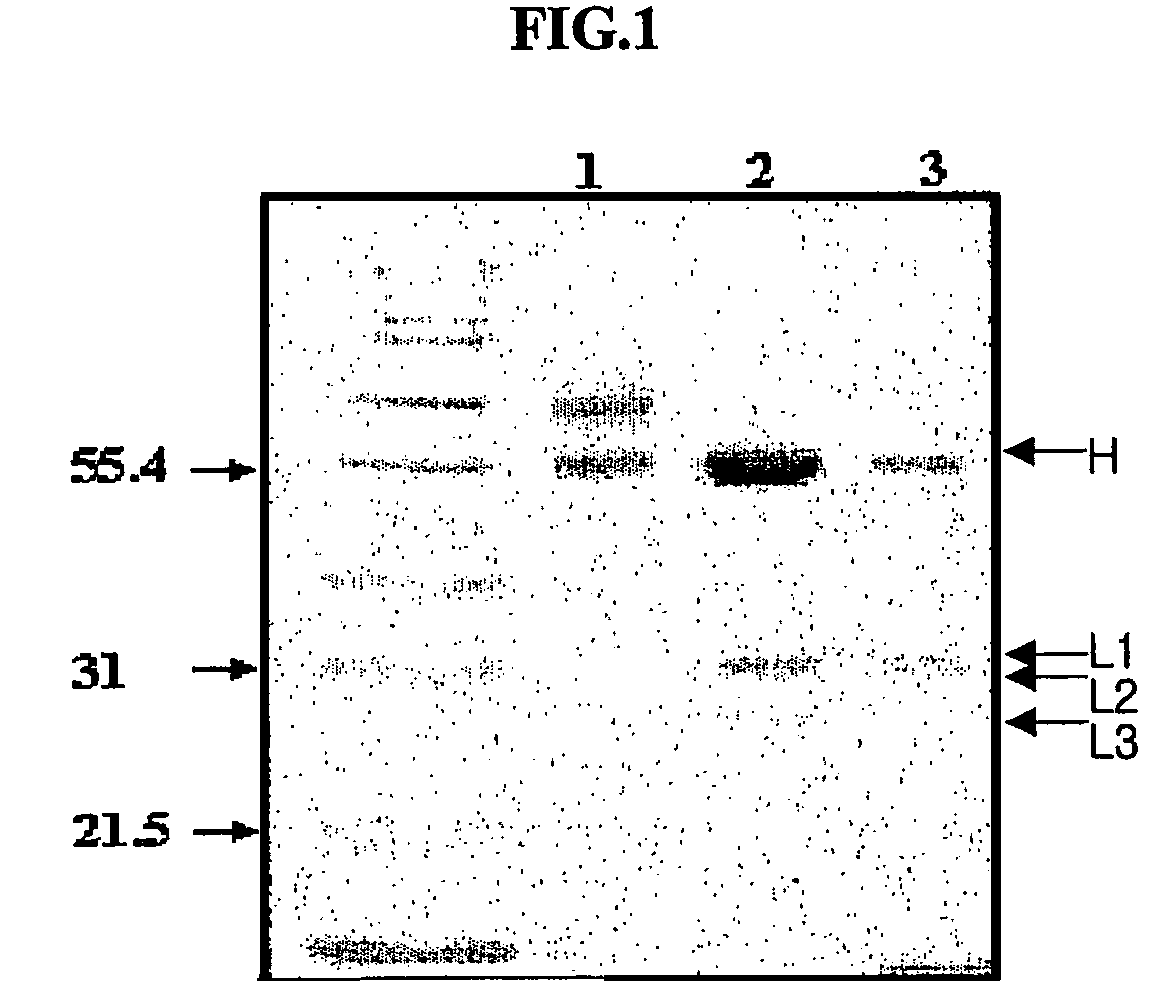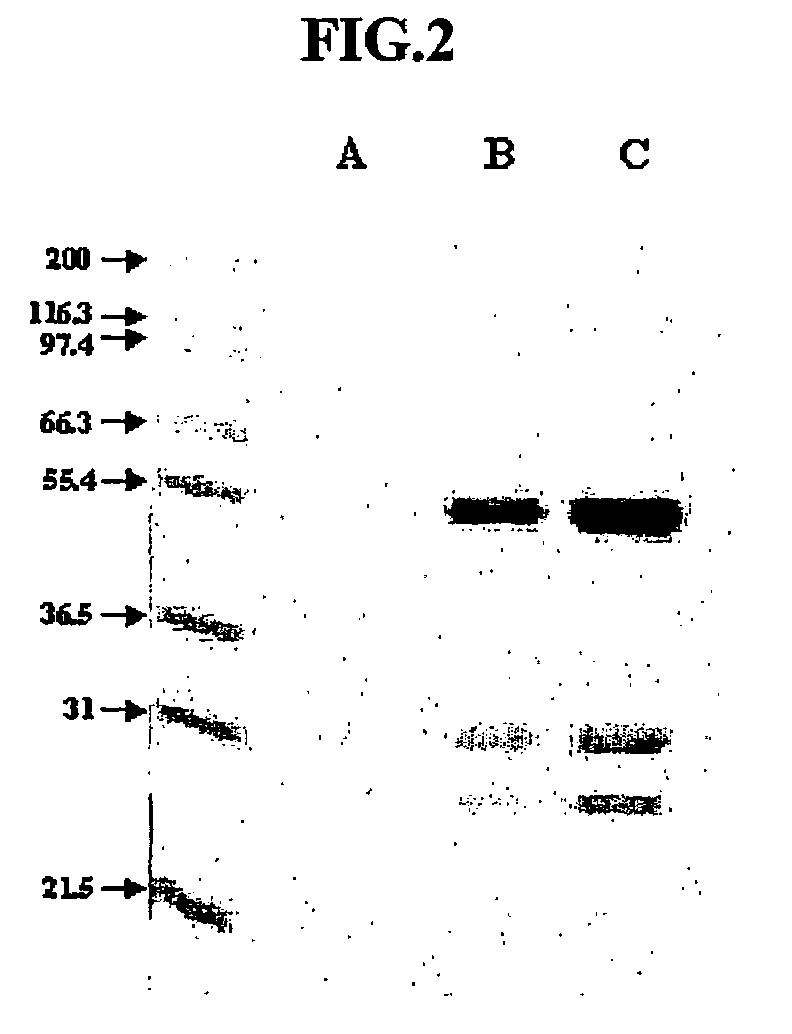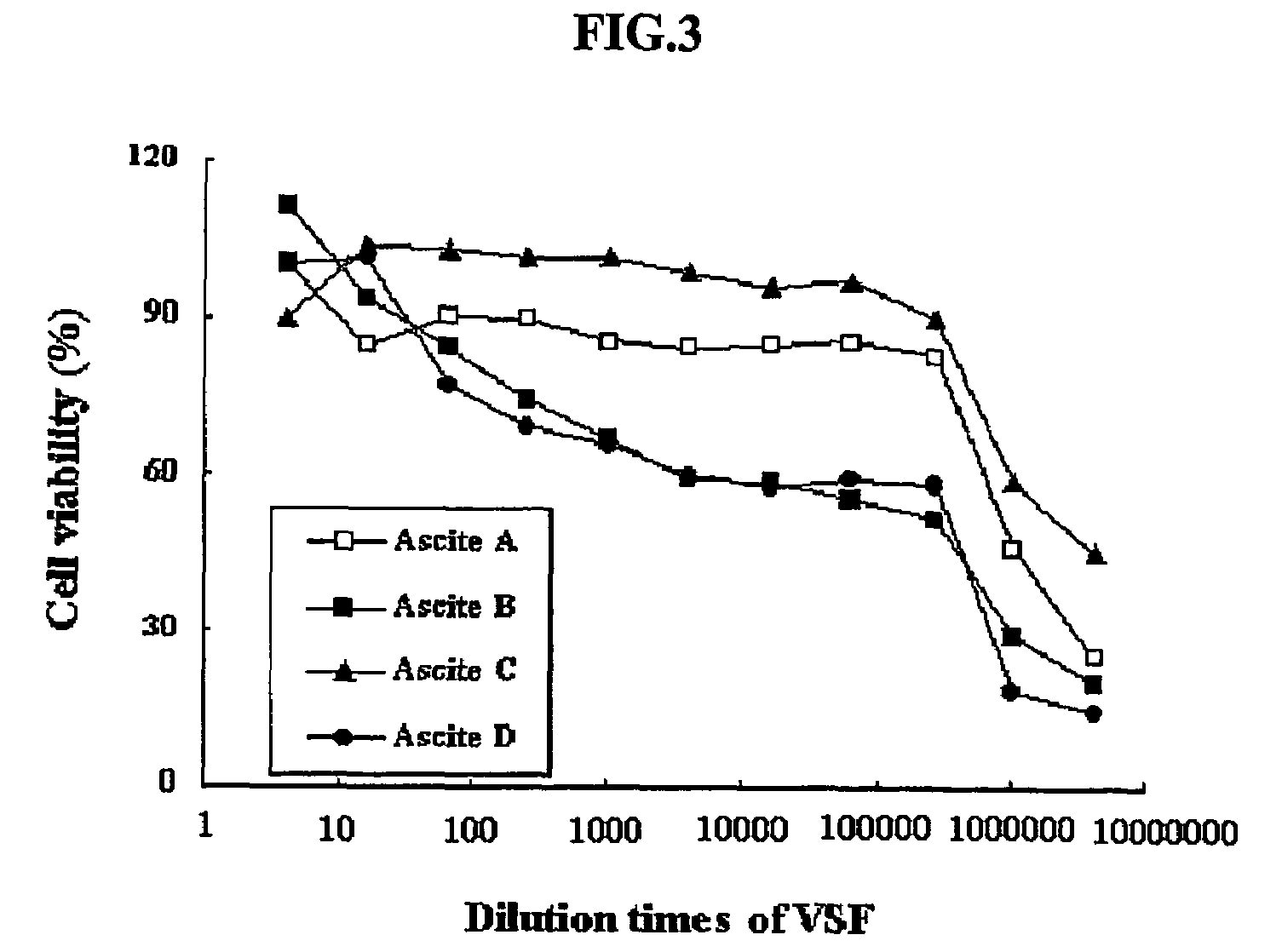Anti-viral VSF protein and hybridoma producing the same
a technology of antiviral vsf and hybridoma, which is applied in the field of new viral inhibitory substances, can solve the problems of limited practical use, low efficacy in vivo, and in vitro production
- Summary
- Abstract
- Description
- Claims
- Application Information
AI Technical Summary
Benefits of technology
Problems solved by technology
Method used
Image
Examples
example 1
Preparation of Hybridomas Producing VSF Protein
[0076]The EMCV variant EMC-DV, was intraperitoneally injected into five 8 week-old BALB / c mice (female) at an amount off 5×104 pfu (plaque forming unit) / mouse. After 7 days, 107 pfu of EMC-DV was intravenously injected. After 4 days, mice were sacrificed to excise spleens. The splenocytes obtained from the excised spleens were fused with myeloma cells (V653) using polyethylene glycol.
[0077]The resulting fused cell clones were subjected to a virus inhibition test (VIT) to screen cell lines having high antiviral activity. VIT was performed using DMEM (Gibco) containing 2% FCS. 50 μl of culture fluid serially diluted over four times was aliquotted into each well of a 96-well plate. 5×104 L cells (murine fibroblasts) were put into each well of the plate. After incubation for 1 hr, 100 pfu of EMCV was added to each well, to make a total volume of 200 μl, followed by incubation at 37° C. for 48 hrs. After incubation, the culture medium was re...
example 2
Production of Ascitic Fluids
[0082]The hybridoma 4D1B (accession number KCLRF-BP-00052) prepared in Example 1 was inoculated in DMEM containing 2% FCS, and incubated at 37° C. under 5% CO2. 1×107-2×107 cells of the cultured hybridma were intraperitoneally injected into mice. After about 2 weeks, ascitic fluids were collected from the swelled abdominal cavities of mice, and centrifuged at 1500×g. The resulting supernatants were aliquotted to a small volume, as described above, and stored at −70° C. until use.
example 3
Sensitivity of VSF Protein to Proteinase
[0083]The VSF protein according to the present invention was evaluated for sensitivity to proteinase. In this test, proteinase K was used, which has specific activity of 30 units / mg. The hybridoma 4D1B (accession number KCLRF-BP-00052) prepared in Example 1 was inoculated in SFM (serum-free media, Gibco), and incubated at 37° C. under 5% CO2. Proteinase K was added to the culture fluid at an amount of 1, 2 and 4 mg / ml, followed by incubation at 37° C. for 1 hr. Separately, trypsin, having specific activity of 10,000 BAEE units / mg protein, was added to the culture fluid at an amount of 1 mg / ml, followed by incubation for 3 hrs. Antiviral activity of VSF protein contained in the culture fluid was analyzed by VIT and MTS assay as described in Example 1.
[0084]As a result, even when treated with a minimum amount of proteinase K, VSF protein lost its antiviral activity. In contrast, in case of being treated with trypsin, VSF protein was found to ret...
PUM
| Property | Measurement | Unit |
|---|---|---|
| molecular weight | aaaaa | aaaaa |
| molecular weight | aaaaa | aaaaa |
| molecular weight | aaaaa | aaaaa |
Abstract
Description
Claims
Application Information
 Login to View More
Login to View More - R&D
- Intellectual Property
- Life Sciences
- Materials
- Tech Scout
- Unparalleled Data Quality
- Higher Quality Content
- 60% Fewer Hallucinations
Browse by: Latest US Patents, China's latest patents, Technical Efficacy Thesaurus, Application Domain, Technology Topic, Popular Technical Reports.
© 2025 PatSnap. All rights reserved.Legal|Privacy policy|Modern Slavery Act Transparency Statement|Sitemap|About US| Contact US: help@patsnap.com



